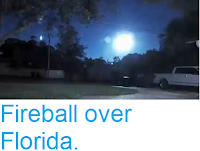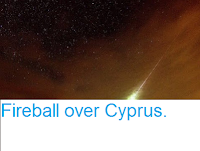The Ursid Meteors are expected to peak on 23 December this year, with
the shower being potentially visible to some extent between 17 and 26
December. The extent of the shower is variable, some years producing
over 100 meteors per hour at its peak, others less than 10; this years shower has the potential to be quite viewable as it falls in the last quarter of the Moon, when the meteors are unlikely to be obscured by bright moonlight. The meteor
shower gets its name from the constellation of Ursa Minor, in which it
appears to originate.
The radiant (apparent point of origin) of the Ursid Meteors. Space.com.
The Ursid Meteor Shower is associated with the comet P8/Tuttle, which
orbits the Sun every 13.6 years, on an orbit that brings it slightly
outside the orbit of the Earth then out to slightly beyond the orbit of
Saturn. Comets are composed largely of ice (mostly water and carbon
dioxide), and when they fall into the inner Solar System the outer
layers of this boil away, forming a visible tail (which always points
away from the Sun, not in the direction the comet is coming from, as our
Earth-bound experience would lead us to expect). Particles of rock and
dust from within the comet are freed by this melting (strictly
sublimation) of the comet into the tail and continue to orbit in the
same path as the comet, falling behind over time.
See also...
Follow Sciency Thoughts on Facebook.







